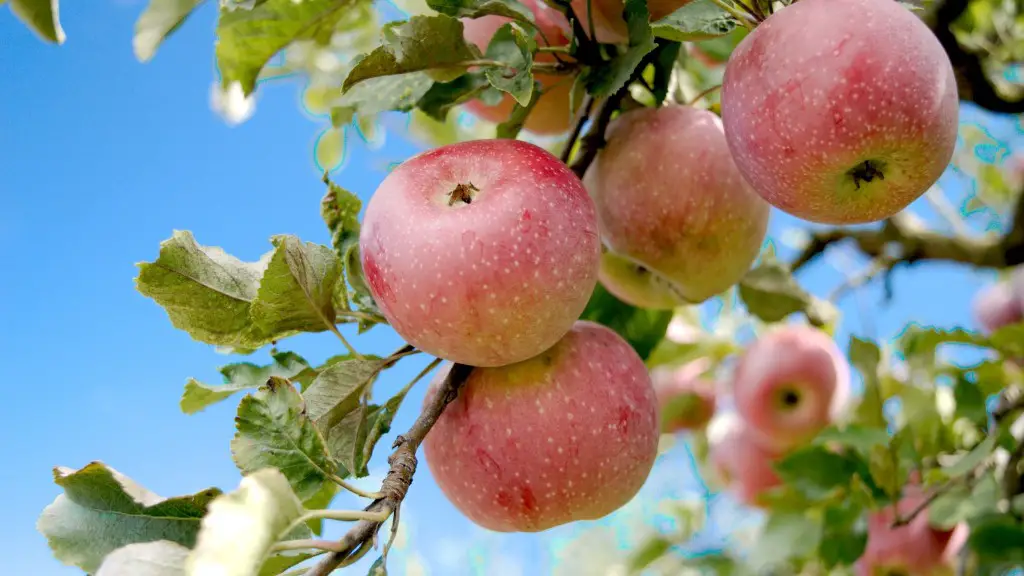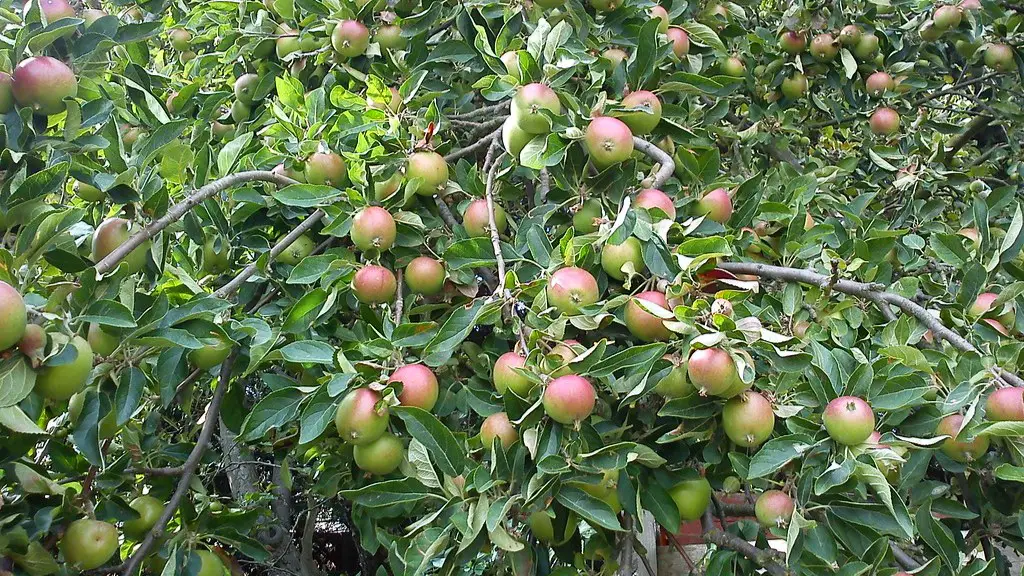Can an Avocado Tree be Grown Indoors?
Avocado trees (Persea Americana) are a large, evergreen fruit tree native to tropical and subtropical regions, most famously in Mexico and Central America. Despite the avocado tree’s preference for a warm climate, recently it has become popular to keep these large trees indoors and have them bear fruit. But, how big can an avocado tree grow indoors? In this article, we will explore the physical and environmental needs of an avocado tree, as well as delve into the specifics of how large they can grows indoors.
The avocado tree originates from Mexico and Central America, although it has been naturalized in other parts of the world. The avocado tree can grow up to 80 feet tall and can live for over a hundred years. Moreover, it has a medium growth rate, so it can grow up to two feet in one season. These large trees are quite hardy, as they prefer well-drained, acidic soil with plenty of organic matter. For each avocado tree, the soil should be amended with at least one to two inches of organic matter prior to planting.
Avocado trees need plenty of water and plenty of sunlight. Therefore, when growing indoors, it is important to have plenty of windows or artificial lighting. It is important to keep the avocado tree moist, so water the tree every time the soil is dry to the touch. The perfect environment for an avocado tree is a warm, humid climate with plenty of rainfall. However, because of their hardiness, they can survive in various climates and indoors they can survive on much less rainfall.
In terms of size when grown indoors, avocado trees are typically much smaller than those that are grown outdoors. An avocado tree grown indoors would typically reach one to four metres in height. That is compared to a tree grown outside which could reach anywhere from twelve to twenty-five metres. As an avocado tree grows, it is necessary to prune off any low-hanging branches and thin out the foliage. Pruning should be done annually to help encourage growth and keep the tree healthy.
Because avocado trees need quite specific conditions in order to produce fruit, they can be difficult to get started. For example, when starting an avocado tree indoors, a germination tube is necessary to provide the right amount of water and warmth necessary for the seed to germinate. The plant can then be transplanted into a pot when it has reached a height of about 6-8 inches. Once it is planted, it must receive adequate light, water, and fertilizer for it to be able to reach its full growth potential.
Although avocado trees can be grown indoors, it is important to recognize that these trees do require special care and attention. They require specific temperatures, humidity, and sunlight levels. If the environment is not ideal, the tree will not be able to reach its full size or produce fruit. It is also important to keep these trees pruned regularly and to keep an eye out for any pests or diseases which could cause harm to the tree. With the right care, however, an avocado tree can thrive indoors.
Adding Fertiliser to an Avocado Tree
Fertilisers should be added to an avocado tree on a regular basis to keep it healthy and happy. Various types of fertilisers can be used, such as organic or inorganic varieties. If using synthetic fertiliser, it is important to use one that is formulated specifically for avocado trees and to follow the manufacturer’s recommended application frequency and amounts. Additionally, organic fertilisers such as manure, compost, or fish emulsion can be used. As with synthetic fertilisers, organic fertilisers should be used according to the manufacturer’s recommendations.
When fertilising, it is important to pay attention to the nitrogen, potassium, and phosphorous ratio of the fertiliser. An ideal fertiliser for an avocado tree should contain nitrogen, potassium, and phosphorous in a ratio of 5:4:4. It is also important to ensure that fertilisers are applied at the correct time, which typically is in early spring, late spring, and again in late summer.
When applying fertiliser, it is important to water the tree thoroughly before and after application. In addition, the fertiliser should be spread over the root area, not placed next to the trunk. Additionally, it is beneficial to mulch around the tree to help regulate moisture levels, as too much water can cause root rot. Mulch also helps keep weeds from establishing near the tree, which can compete with the avocado tree for essential nutrients, water, and sunlight.
When using any type of fertiliser for an avocado tree, it is important to understand that over-application can cause significant harm and should be avoided. Too much fertiliser can cause the tree to become over-fertilised, which can lead to a number of issues, such as leaf burn, nutrient imbalances, and root damage. Additionally, it is important to note that the amount of fertiliser needed may vary according to the specific tree and situation.
Repotting an Avocado Tree
Repotting an avocado tree is an important part of its care, as it allows the tree to have more room to grow and access to plenty of new soil, which can help to ensure the tree stays healthy. The specific size of the pot for repotting may vary according to the size and age of the tree. For a young plant, a pot with a diameter of 6-8 inches is ideal, while a larger tree may need a pot with a diameter of 12-18 inches.
When repotting an avocado tree, it is important to select a pot with drainage holes in the bottom, as this will help to prevent root rot from occurring. Additionally, the pot should be filled with fresh potting soil that is specially developed for avocado trees. When selecting a potting soil, it is important to select one that is light and porous, such as a mixture of organic matter and sand or peat moss. If a pot that has no drainage holes is used, it is important to use an organic matter-based mix, as this will absorb excess water more effectively.
When transplanting an avocado tree, it is important to be gentle, as the roots can be brittle and can be easily damaged. It is beneficial to use a thin layer of mulch around the tree, as this will help to keep the soil moist and protect the tree from overheating. Additionally, the tree should be watered daily for the first few weeks after repotting to help it become established.
Repotting an avocado tree is not difficult, but it is important to make sure the tree is not over- or under-watered during the process. Too much water can cause the root system to become waterlogged, while too little will cause the roots to dry out. Additionally, it is important to repot the tree only when necessary, as too frequent repotting can damage the root system.
Diseases that Affect Avocado Trees
Although avocado trees are generally quite resilient and disease-resistant, there are some diseases that can affect them. Among the most common diseases affecting avocado trees are root rot, scale, leaf spot, and powdery mildew. Each of these diseases can cause significant damage to an avocado tree if left untreated, so the symptoms should be monitored and the tree should be treated if necessary.
Root rot is a common disease that affects avocado trees, especially if the tree is over-watered or the soil doesn’t provide adequate drainage. Root rot is caused by a fungus, which means that in addition to reducing water, a fungicide may also be necessary in order to treat the disease. Additionally, it is important to ensure that the tree is planted in well-draining soil in order to help prevent root rot.
Scale and leaf spot are also common issues that can affect avocado trees. Scale is caused by a small, oval shaped insect, while leaf spot is caused by a fungus. Both of these can be treated with insecticides or fungicides and should be monitored closely to prevent further damage to the tree. Furthermore, powdery mildew can affect an avocado tree, although it is usually only an issue in regions with high humidity and should be treated quickly with a fungicide.
In addition to diseases, avocado trees can also be affected by pests, such as aphids, whiteflies, mealybugs, and spider mites. These pests can cause leaf discolouration and wilting, as well as damage the tree’s root system, so it is important to treat them quickly. In general, the best way to rid an avocado tree of these common pests is to use an insecticidal soap or horticultural oil. Additionally, it is beneficial to introduce beneficial insects, such as ladybugs and lacewings, to the tree’s environment in order to keep the pests away.
Preventing Problems with Avocado Trees
In order to keep an avocado tree healthy and free from disease and pests, it is important to take preventive measures, such as following a regular fertilising and pruning schedule, monitoring the soil’s pH levels, and ensuring the tree receives adequate light and water. Additionally, it is beneficial to regularly inspect the tree for pests and diseases, as this can help to detect any issues early on.
When it comes to water, it is important to ensure that the tree does not get too much or too little. Additionally, the soil should be tested on a regular basis in order to determine the correct pH level for the tree. If necessary, adjustments can then be made in order to keep the soil at the correct pH level. Lastly, it is beneficial to inspect the tree for signs of stress, such as wilting or discolouration of leaves, as this can indicate a potential issue.
Fertilising is also an important component of an avocado tree’s care. As mentioned earlier, an ideal fertiliser for an avocado tree should have a ratio of 5:4:4, and it should be applied at the correct time and in the correct amounts. Additionally, it is important to avoid over-fertilising, as this can lead to a number of issues, such as nutrient imbalances and root damage.
Pruning is also important for an avocado tree, as it helps to shape the tree, encourage growth, and promote fruit production. When pruning, it is important to wear gloves and use clean, sharp pruning shears. Additionally, it is beneficial to use a tracing wheel to mark the area to be cut, as this can help to ensure a clean cut. Pruning should be done regularly, and it is important to avoid unnecessary pruning or over-pruning, as this can significantly stress the tree.
Conclusion
Avocado trees can be grown indoors, and when grown indoors, they typically reach one to four metres in height. These trees require specific temperatures, humidity, and sunlight levels in order to thrive, and they should be fertilised, pruned, and watered properly in order to ensure they reach their full growth potential. Additionally, care should be taken to prevent and treat any diseases or pests that may affect the tree. Following these steps can help to ensure that an avocado tree is able to thrive indoors.




